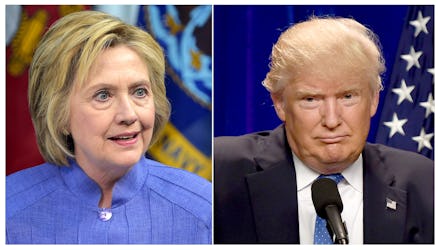What is the electoral college? The history behind the US' weird way of picking a president

Every four years, millions of Americans head to the ballot box. They think they're picking the next president of the United States. But they're not technically voting for Donald Trump, Hillary Clinton or any other candidate. Voters actually punch the ballot for an elector.
Welcome to America's confusing presidential election system, brought to you by Founding Fathers such as Alexander Hamilton.
The Electoral College is as old as the country's Constitution. When the Founding Fathers shaped the nation, they had to choose a system for selecting the President. At the time, there were competing schools of thought for selecting the country's leader. Some believed Congress should choose the president. Others thought citizens should directly elect the president.
The latter idea — known as "pure democracy" — terrified some of America's early leaders. "Such democracies," wrote James Madison in 1787, "have in general been as short in their lives as they have been violent in their deaths."
Hamilton echoed Madison in a paper published in 1788, just before the Constitutional Convention, that attempted to rally support for the Electoral College. While the Founding Father popularized by the Broadway musical Hamilton believed average people should have a role in choosing the President, he argued the decision should be made by particular, "capable" individuals:
It was equally desirable, that the immediate election should be made by men most capable of analyzing the qualities adapted to the station, and acting under circumstances favorable to deliberation, and to a judicious combination of all the reasons and inducements which were proper to govern their choice. A small number of persons, selected by their fellow-citizens from the general mass, will be most likely to possess the information and discernment requisite to such complicated investigations.
To compromise, these constitutional creators settled on the Electoral College. Each state is given a certain number of electors based on population. But each senator and representative are worth one elector, giving no state fewer than three votes. Electors, often chosen by state political parties, vote for their party's presidential nominee if he or she wins the popular vote in that state.
Following the results of the popular vote, electors gather in each state and vote to choose the next president. Today, we typically know the results of the election shortly after the polls close. But the electoral votes are not technically tallied until they are announced in Congress on Jan. 6 following the election.
In 2016, there are 538 electoral votes, meaning a presidential candidate needs 270 to win. In all but two states, whoever wins a majority of the popular vote takes all of the electoral votes. Maine and Nebraska are the exceptions, dividing electoral votes by congressional district.
Most polling shows Clinton beating Trump handily in the Electoral College.
Do electors have to vote for the popularly elected presidential candidate?
No. But they nearly always do. According to the National Archives, 99% of electors have voted as pledged to their party throughout American history.
The Constitution does not say electors must pick the presidential candidate favored by voters in their state, but some states have laws that punish electors for choosing a candidate other than the one they pledged to support.
Has the Electoral College always reflected the popular vote?
No. Remember 2000? Vice President and Democratic presidential candidate Al Gore won the popular vote by more than 500,000 votes. But Republican nominee George W. Bush edged out Gore in Florida and won the Electoral College. The race was so close that the Supreme Court eventually said recounts in Florida had to end, effectively handing Bush the presidency.